Erik the Red, a figure shrouded in both history and myth, stands as a pivotal character in Norse lore. His life, a tapestry of exploration and resilience, encapsulates the essence of the Viking Age. Known primarily for founding the first Norse settlements in Greenland, Erik’s story extends beyond mere conquests to reflect the complex interplay of mythology and historical realities of his era. This article aims to delve into the depths of Erik the Red’s life, unraveling his journey from banishment in Iceland to his legendary status in Greenland. We commit to presenting a narrative that is not only historically accurate but also rich in the cultural and mythical context of the Norse world. By intertwining historical facts with mythological elements, we seek to offer a comprehensive and insightful exploration of one of the most enigmatic figures in Norse history.
| Attribute | Erik the Red Information |
|---|---|
| Origin | Icelandic and Norse History |
| Historical Figure | Explorer and founder of the first Norse settlements in Greenland |
| Exile | Exiled from Iceland and later discovered and named Greenland |
| Settlements | Established the Eastern Settlement and Western Settlement in Greenland |
| Father of Leif | Father of Leif Erikson, the famous Norse explorer of North America |
| Cultural Impact | A significant figure in Norse exploration and colonization |
| Legacy | Known for paving the way for later Norse exploration of North America |
1. Historical Context
The Norse Era and Viking Age
The Norse Era, a period defined by its intrepid seafaring and exploration, serves as the backdrop to Erik the Red’s story. During the Viking Age, which spanned from the late 8th to the early 11th century, Scandinavian societies were undergoing profound changes. These societies were characterized by their robust maritime culture, warrior ethos, and a social structure that valued honor and bravery. The era was marked by the Vikings’ expansion through trade, exploration, and conquests across Europe and beyond. This period was not just about raiding; it was also a time of cultural exchange and settlement, aspects that are central to understanding Erik the Red’s journey from banishment to becoming a founder of new lands.
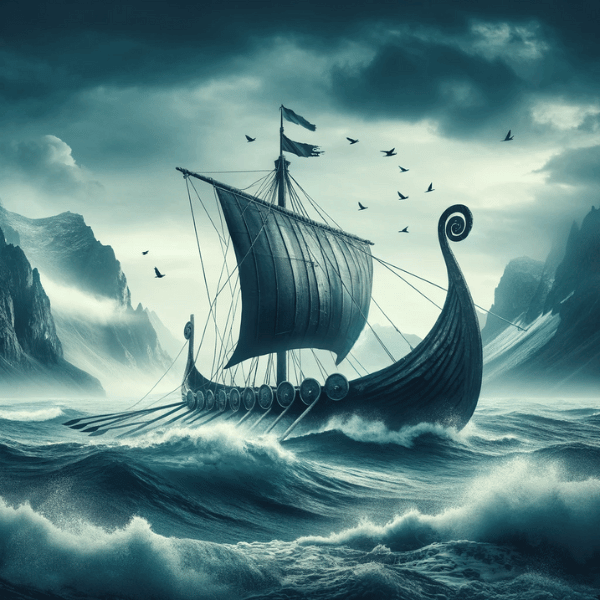
Norse Mythology and Its Influence
Norse mythology, with its pantheon of gods, heroes, and an array of mythical creatures, played a significant role in shaping the Viking world view. These myths provided a framework for understanding the world and one’s place in it, often reflecting the values and challenges of Viking life. Stories of Odin, Thor, and Loki, among others, were not mere entertainment; they were integral to the cultural and religious life, influencing decisions from warfare to voyages. In the context of Erik the Red, these myths likely influenced his perception of the unknown and his role as an explorer. The sagas, a blend of history and myth, which narrate his exploits, were products of this rich mythological tradition, emphasizing qualities like bravery, cunning, and the desire to forge one’s destiny in the face of adversity.
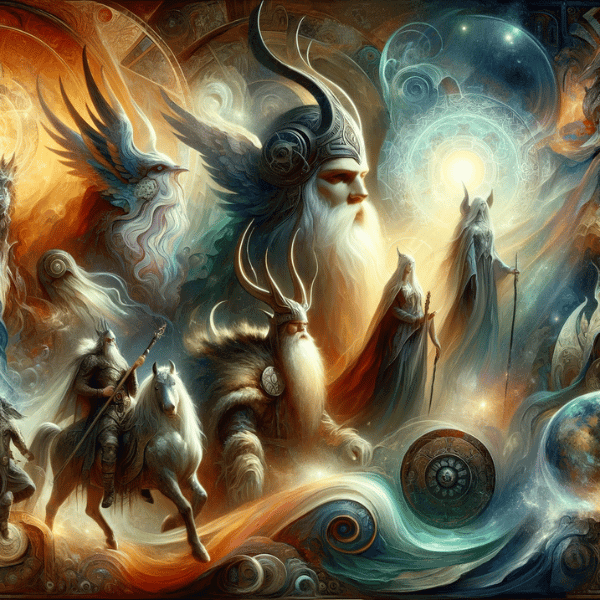
2. The Life of Erik the Red
Early Life and Family Background
Erik the Red’s origins, as chronicled in medieval sagas, are as intriguing as his adventures. Born as Erik Thorvaldsson in Norway, his early life was marked by upheaval. His father, Thorvald Asvaldsson, was exiled for manslaughter, leading the family to settle in Iceland, a land then at the frontier of Viking exploration. This harsh, yet opportunity-rich environment shaped Erik’s character, instilling in him qualities of resilience and adaptability. The sagas depict a young Erik growing up in a society where survival depended on both physical prowess and astute understanding of complex clan politics.
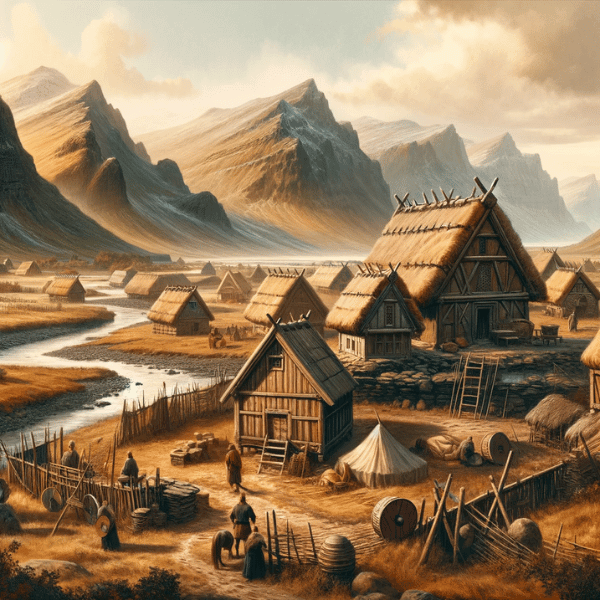
Journey to Iceland
Erik’s own journey to exile began with a series of conflicts and eventual banishment from Iceland. This period was rife with disputes over land and honor, common in the semi-lawless expanses of Viking settlements. His banishment was not merely a personal setback but a reflection of the turbulent and often violent nature of Icelandic society at the time. These social and political factors played a crucial role in his decision to seek new lands, pushing him to the fringes of the known world.
Discovery of Greenland
The saga of Erik’s discovery of Greenland is a testament to his daring and navigational skills. Driven by necessity and ambition, Erik embarked on a treacherous journey across the Atlantic. Facing harsh seas, uncertain weather, and the daunting task of finding habitable land, his expedition was a gamble against great odds. His motivation was not just personal survival, but also the prospect of establishing new settlements — a goal that would elevate his status from an outlaw to a pioneer. His successful colonization of Greenland, despite its challenges, marked a significant achievement in Viking exploration and expansion.
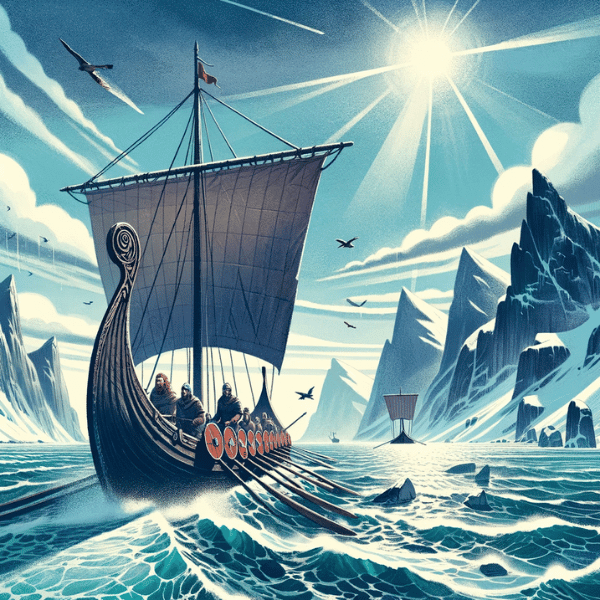
3. Erik the Red in Myth and Reality
Erik’s Portrayal in Norse Sagas
Erik the Red’s life, as painted in the Norse sagas, oscillates between the grandeur of myth and the grit of historical reality. In texts like the Saga of Erik the Red and the Saga of the Greenlanders, he emerges as a larger-than-life figure — bold, cunning, and sometimes ruthless. These sagas, while historical in nature, are imbued with the storytelling traditions of the Norse, often blurring the lines between fact and fiction. Common themes, such as exile, exploration, and the founding of new lands, are consistent across narratives, yet details about his character and exploits vary. Some sagas emphasize his leadership and pioneering spirit, while others focus on his temper and the conflicts that led to his banishment. This multifaceted portrayal reflects the complex nature of Viking society and the role of storytelling in immortalizing their heroes.
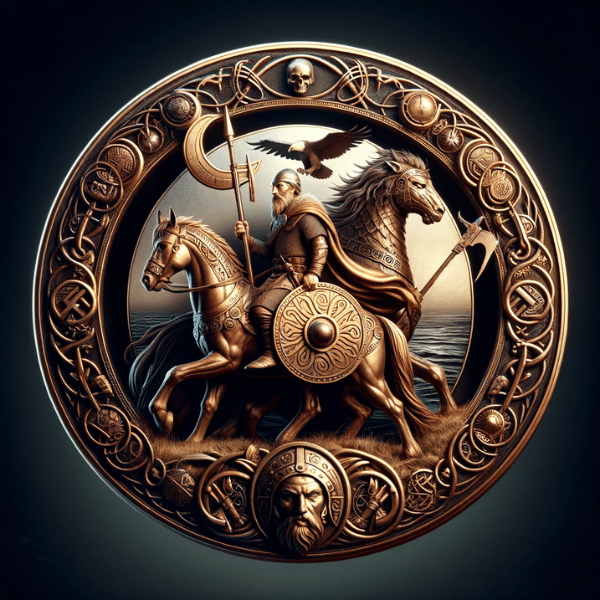
Historical Evidence vs. Mythical Tales
The task of separating historical fact from mythical embellishment in Erik’s story is challenging but enlightening. Archaeological evidence, such as the ruins of Norse settlements in Greenland, corroborates the basic outline of his voyages and settlements. These findings provide tangible proof of the Norse presence in Greenland, aligning with saga accounts of Erik’s colonization efforts. However, the sagas’ more extraordinary claims, like details of Erik’s interactions with indigenous populations or supernatural elements, remain largely in the realm of legend. By comparing these sources, a picture emerges of a man who was indeed pivotal in Norse exploration but whose life has been elevated and, in some ways, mystified by the passage of time and the tradition of oral storytelling.
4. Erik the Red’s Legacy
Impact on Viking Exploration
Erik the Red’s expeditions had a profound impact on the course of Viking exploration and the broader narrative of European expansion. His successful settlement in Greenland not only proved that distant and challenging voyages could lead to viable colonies but also opened a new chapter in the Viking Age. His journey encouraged further exploration and eventual contact with North America, as evidenced by the adventures of his son, Leif Erikson, and others. This spirit of exploration, initiated in part by Erik, epitomized the Vikings’ boldness and adaptability, qualities that enabled them to leave an indelible mark on history. His achievements demonstrated the possibilities that lay beyond the known world, inspiring generations of explorers and adventurers.
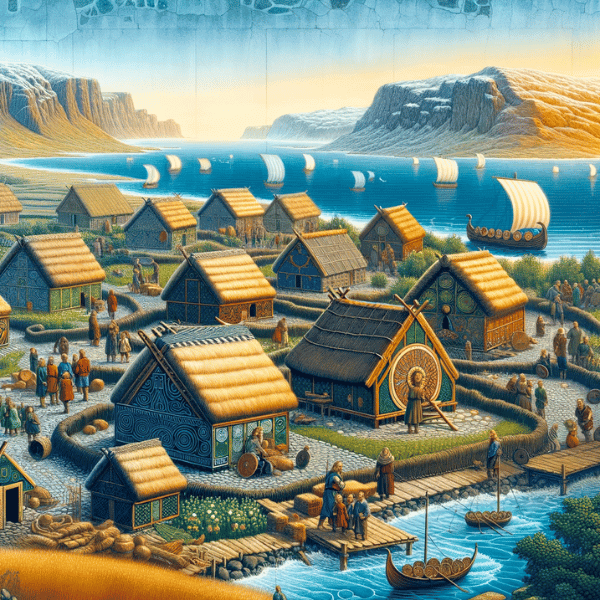
Cultural and Historical Significance
Erik the Red’s influence extends beyond his immediate achievements in exploration. In Norse culture, he symbolizes the quintessential Viking traits: bravery, resilience, and the relentless pursuit of new horizons. His story, woven into the fabric of Norse sagas, contributes significantly to our understanding of Viking society and its values. In modern times, Erik’s legacy is reflected in the fascination with Viking culture and history. His life story continues to inspire literature, film, and art, capturing the imagination of people seeking to understand the Viking era. Moreover, his role in opening up Greenland has historical significance, offering insights into the patterns of human migration and settlement in the medieval period.
5. Conclusion
In retracing the journey of Erik the Red, we uncover a narrative rich in adventure, myth, and historical significance. His story, from a banished outlaw to a celebrated explorer, encapsulates the essence of the Viking spirit. Erik’s ventures into the unknown not only shaped the course of Viking exploration but also left a lasting imprint on our understanding of the Norse era. His life, as depicted in sagas and evidenced by archaeological findings, offers a unique window into the world of the Vikings, where myth and reality intertwine. As we close this chapter on Erik the Red, we invite readers to delve further into the captivating world of Norse mythology and Viking history, where each saga and artifact holds the promise of unraveling more of the mysteries of this fascinating era.
